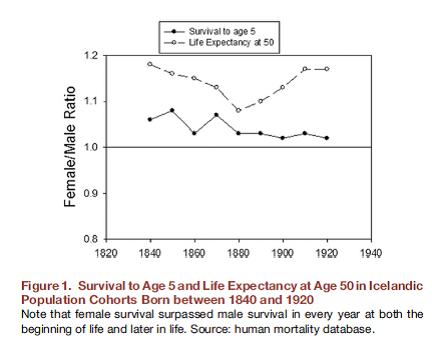

Unequals
Some prominent words enclose and spread a myth, while carrying a great potential for confusion. “Equality” is one of them. Its pedigree and status at the ladder of political values is incontestable, especially since the Enlightenment elevated it to the Trinity of republican principles, as one of the indispensable guarantors of the exercise of full citizenship. Social equality draws and prefigures a moral goal of perfection. A palatable and pristine horizon of equitable and adequate distribution of attributes, goods, roles, services and costs for everyone, in any circumstance and condition, and in each one of the corners of the planet. It should not be surprising, therefore, that most of the ideologies that compete at the market of promises of good governance, raise equality as a preferential notion.
The recurring problem with equality is that it offers an unexpected and stubborn resistance to be conquered and fully achieved. Whatever the ideological route of approach or the normative, economic or technological procedure of siege, equality always manages to sneak. And it is not uncommon for some of the more well-intentioned paths of accessing it, to generate huge degrees of inequality with ostentatious and bleeding disparities. They are endeavors that reiterate their hopeful journeys towards a devastating failure with such assiduity that, were it not for the infinite repository of faith that nests in human souls, they should be considered obscene enterprises.
In conflicts over gender gaps the confusion and disorientation promoted by the goal of equality at all costs has had particularly obfuscating effects. And it is curious that this revolves around one of the clearest frontiers of differentiation, sex, provided by human nature, if one takes the necessary distance to contemplate it using objective periscopes. In fact, sexual reproduction is a tool invented by nature to generate variability incessantly. Each non-clonic recombination is a genuine contribution to diversity and distinctiveness. And each new germ or nuance of diversity nourishes the immense land of possible inequalities always ready for multiplicative expansions.
The differentiating features around the male-female gap, in humans, make up an intricate universe of biological disparities that the most uninhibited and imaginative research fronts are clearing up with good rhythm[1]. Although the advances are splendid, with fruitful findings concerning many distinctive physiological systems, there are apparent areas of that female-male gap where solid knowledge remains downright poor. The striking differential longevity between women and men is one of them.
Sexual differences in longevity constitute one of the most robust and distinctive features of human biology. Compared with data from other species, the findings on differences in longevity between human sexes are abundant and all go in the same direction: women have a strong and notorious advantage in longevity – between five and seven years of life, on average – in all parts and cultures of the world. There are data for virtually every society on the planet, and although not all of them have the same degree of detail and reliability, the crucial finding is a robust feminine predominance in all measures of durability and resilience in the face of adversity[2]. When data records are consistent over several centuries, this female advantage has been tested across all age segments (see Figure 1, Austad and Fisher, 2016), and it has been found that such primacy on durability is already detectable around birth and is maintained throughout life. It is even more pronounced in the advanced and late life stages: over 90% of the super-centenarians, a growing segment in all rich societies, are women.

But that shocking advantage for feminine durability and resilience is not only global. Women are better, in comparison, at enduring and resisting to almost all the main causes of death. This greater strength is evidenced in figures of resistance to the most lethal ailments[3]. On the top 15 causes of death at the US (see Table, Xu et al, 2016) women get better scores in thirteen of them. Two exceptions: there is no appreciable sexual bias in lethal strokes and only in Alzheimer’s dementias women carry a much greater risk to succumb.

It has not been possible to reveal yet, in detail, the molecular and cellular mechanisms that confer this notorious advantage in durability and resistance to women. The most well-founded suspicions are directed towards possible early and differential hormonal influences (estrogens vs. androgens), which would affect the efficiency of inflammatory or immunological responses and would help to attenuate the oxidative stress toxicity during continuous metabolic work. But the data that would support these conjectures are scarce and very incipient. It is, however, a field of inquiry with a great relevance since it could illuminate plausible gears and modes of functioning that would mediate the resistance gap in lethality, which results in considerable differences between sexes. Gears and mechanisms that if known with precision and security, could allow the introduction of corrective advances for everyone.
Let’s hope that the unending political litigations to attain “equality” amid heated debates on gender-based social gaps, will not lead to ignore or marginalize the increasingly rich and fruitful research about the diversity of biological gaps between the sexes. Because in the midst of the dust and effervescence of political disputes, it could happen that for the sake of a highly challenging and desirable social parity, profitable inequalities will be blurred, denied or buried. Inequalities which are not going to vanish.
Pfaff DA (2011) Man and woman: an inside story, New York: Oxford University Press.
[2] Austad SN and Fisher KE (2016) Sex differences in lifespan, Cell Metabolism, 23, 1022-1033.
[3] Xu J, Murphy SL, Kochanek KD and Bastian BA (2016) Deaths: final data for 2013, National Vital Statistics, Report 64, 1-119.

Adolf Tobeña
Monographic Giflted women, fragile men
Departamento de Psiquiatria y Medicina Legal. Instituto de Neurociencias. Universidad Autónoma de Barcelona
March 2017
